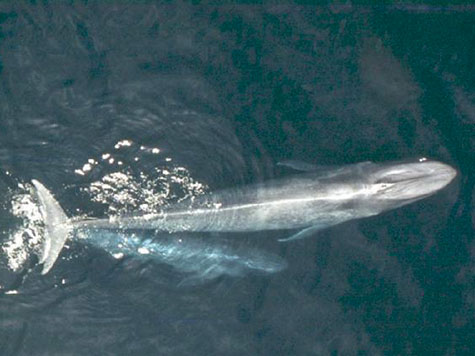Larger than any other animal on earth, California blue whales are surging to numbers not seen in over 100 years, a fresh wave of evidence indicates.
Research reveals approximately 2,200 California blue whales now cruise the eastern Pacific Ocean off the coast from the equator all the way up to the Gulf of Alaska. That constitutes an estimated 97% of historical levels of blue whale populations, according to recently released University of Washington research.
Now population growth of the whales has slowed, but one of the UW researchers explains this as a result of whale populations reaching carrying capacity.
“We think the California population has reached the capacity of what the system can take as far as blue whales,” said researcher Trevor Branch, UW assistant professor of aquatic and fishery science.
Blue whales can reach a massive length in excess of 100 feet and 300,000 pounds. They rank as the largest animal on earth. The whales generally breed in winter to early spring in warm waters and near the surface. Females give birth every 2-3 years and gestation period is approximately one year.
Baby blue whales, known as calves, are born approximately 23 feet in length and 5-6,000 pounds. Nursing female blue whales produce over 50 gallons of milk a day. Calves gain up to 10 pounds an hour or 250 pounds a day, while nursing.
From 1905 to 1971, whalers caught approximately 3,500 California blue whales in the eastern Pacific region. Numbers today are said to be nearly equal to those before 1905. UW researchers have found that despite some complaints about boat strikes of whales in recent history, these incidents do not have a material effect on the blue whale population.
The UW also reported, “Without ship strikes as a big factor holding the population back–and no other readily apparent human-caused reason (although noise, chemical pollution and interactions with fisheries may impact them)–it is even more likely that the population is growing more slowly because whale numbers are reaching the habitat limit, something called the carrying capacity.”
A video of mating blue whales mating off of Dana Point, California was posted online in 2009. An announcer, on what sounds to be a whale-watching vessel, tells those on the boat that the whales are indeed mating.

COMMENTS
Please let us know if you're having issues with commenting.